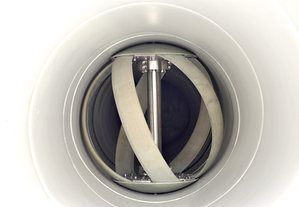From Oregon to Johannesburg, Micro-hydropower Offers a Solution for Drought Hit Cities
Published on by Naizam (Nai) Jaffer, Municipal Operations Manager (Water, Wastewater, Stormwater, Roads, & Parks) in Business
To see how closely water and energy are linked, you only have to look at the west coast of the US, where four years of severe drought have led to historically low levels in water reservoirs, forcing some hydroelectric plants to shut down or cut production.
It’s little wonder, then, that new micro-hydropower technology that allows cities to generate electricity from the water running through their pipes is gaining worldwide attention.
Water-hungry energy, energy-hungry water
“The drought has fundamentally changed the way our electricity is produced,” says California-based Peter Gleick.
Gleick is president of the Pacific Institute, a water thinktank which reported in March that in the three years to October 2014 hydropower’s contribution to California’s electricity supply fell to less than 12%, from a previous average of 18%.
This meant a switch to a heavier reliance on more expensive natural gas, at a cost of approximately $1.4bn a year to California’s homes and businesses. It has also come at heavy environmental cost, with researchers estimating an extra 14m tons of CO2 emitted, along with an increase in other pollutants.
Water provision itself is demanding increasing amounts of energy, says Laura Wisland, energy analyst at environmental lobby group the Union of Concerned Scientists.
A recent report Wisland co-authored points out that nearly 20% of California’s electricity is consumed by the state’s water sector – something that is expected to increase with intensified groundwater pumping, water treatment and water recycling to cope with the state’s prolonged droughts.
Harnessing electricity
To tackle the high demand water and energy place on one another, micro-hydropower is emerging as a technology with potential. In January, Portland, Oregon became the first city to harness electricity from its water pipes and sell it to the electricity grid.
The city is using a technology developed by Lucid Energy, which says it will generate 1,100 MWh of electricity a year – the equivalent of powering 150 homes – from four turbines installed along a 50-foot section of Portland’s water pipes.
The mayor of Johannesburg, Mpho Parks Tau, likewise intends to use Lucid’s technology to help his city cope with the country’s worst electricity crisis since 2008.
Lucid is not the first company to innovate with in-pipe hydropower. This summer Rentricity, a New York startup announced it had started work on a large irrigation pipeline project in Utah that will be a net exporter to the power grid. In the UK, Welsh Water and Scottish Water have been generating power in their pipes for four and two years respectively.
But Bill Kelly, who this week became Lucid’s chief executive, replacing founder Gregg Semler, says its five-bladed spherical turbines are unique in not impeding the flow of water.
Attached link
http://www.theguardian.com/sustainable-business/2015/sep/18/portland-oregon-drought-microhydro-electricity-from-water-pipes-lucid-energy-californiaTaxonomy
- Hydropower
- Energy Efficiency
- Micro Hydro Siting